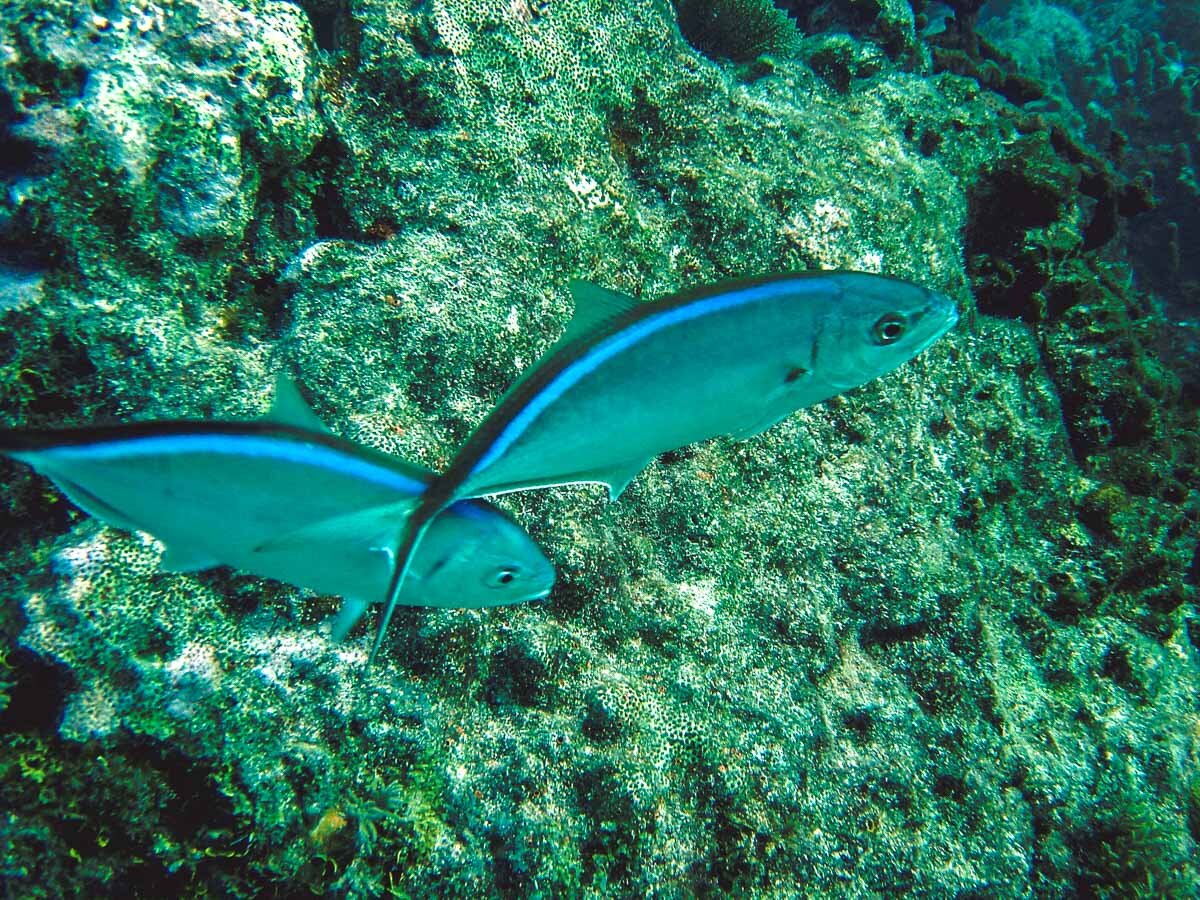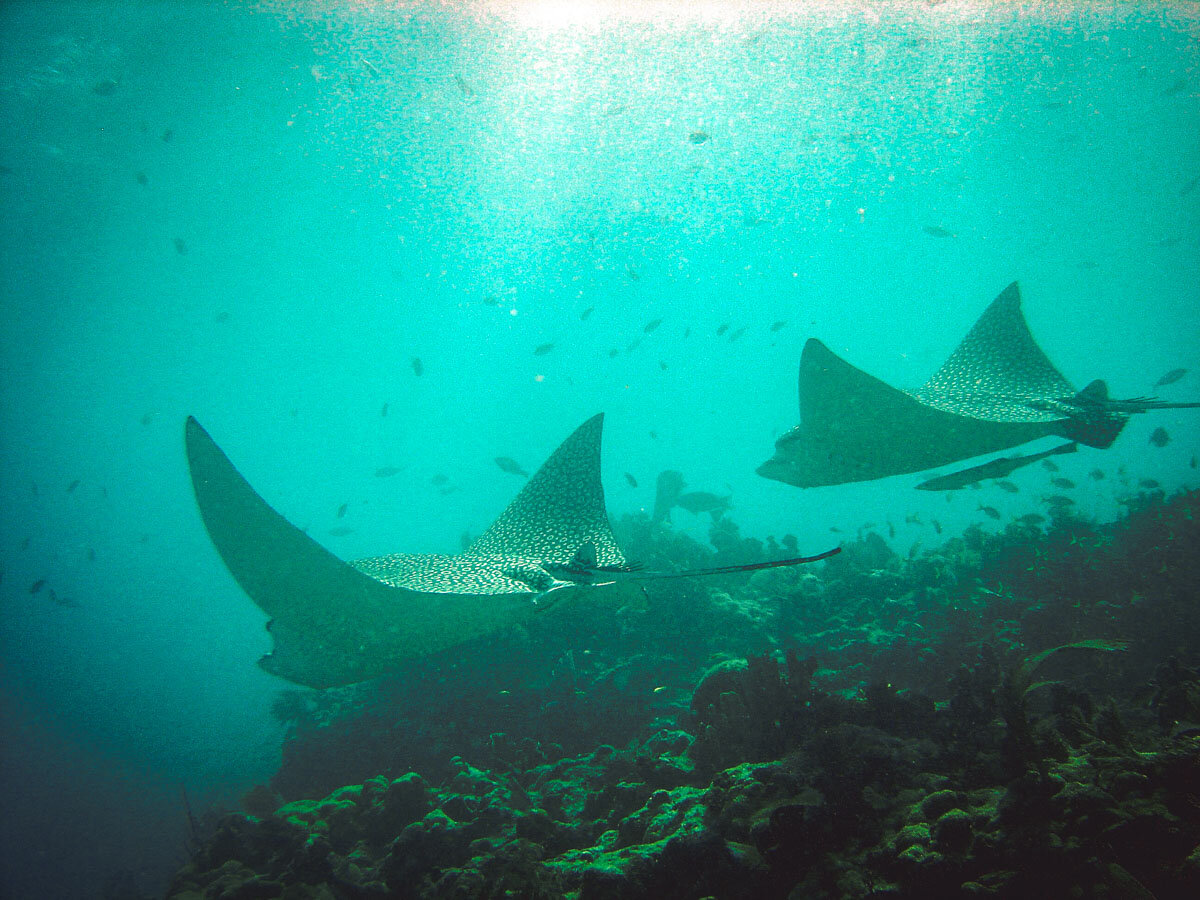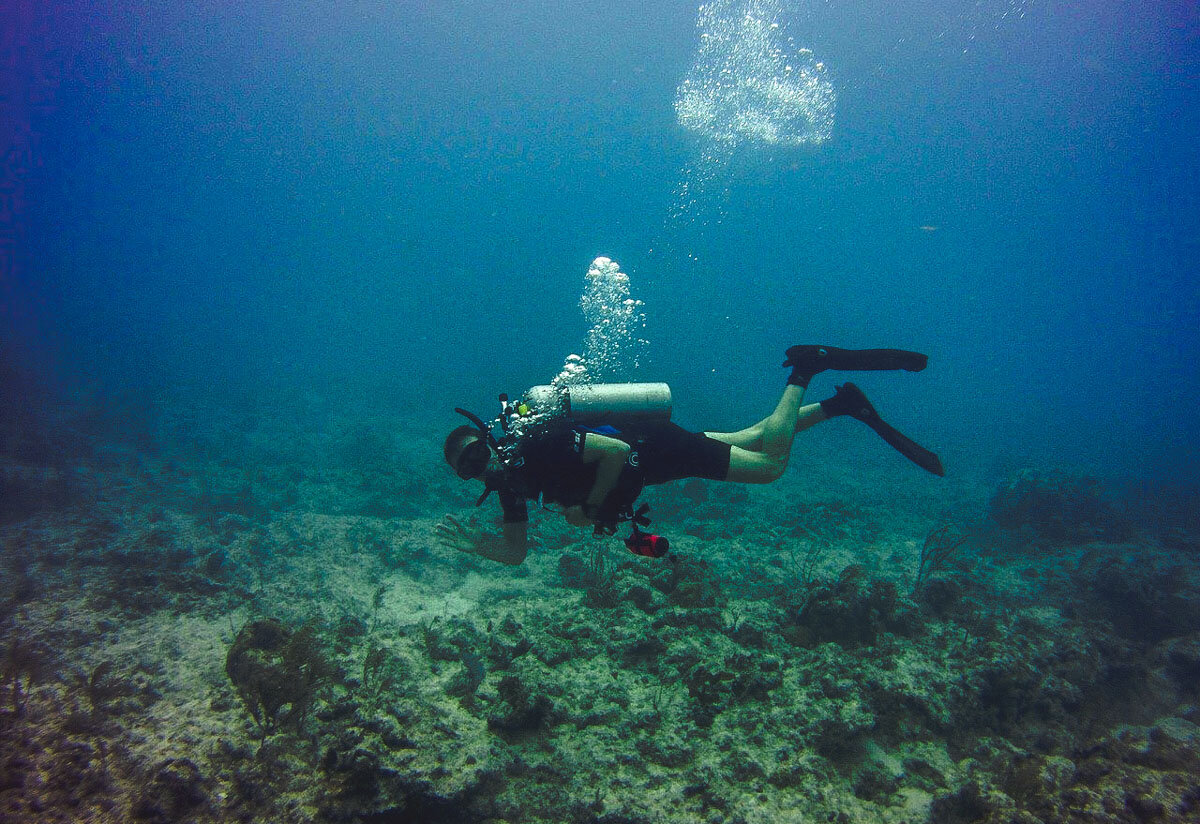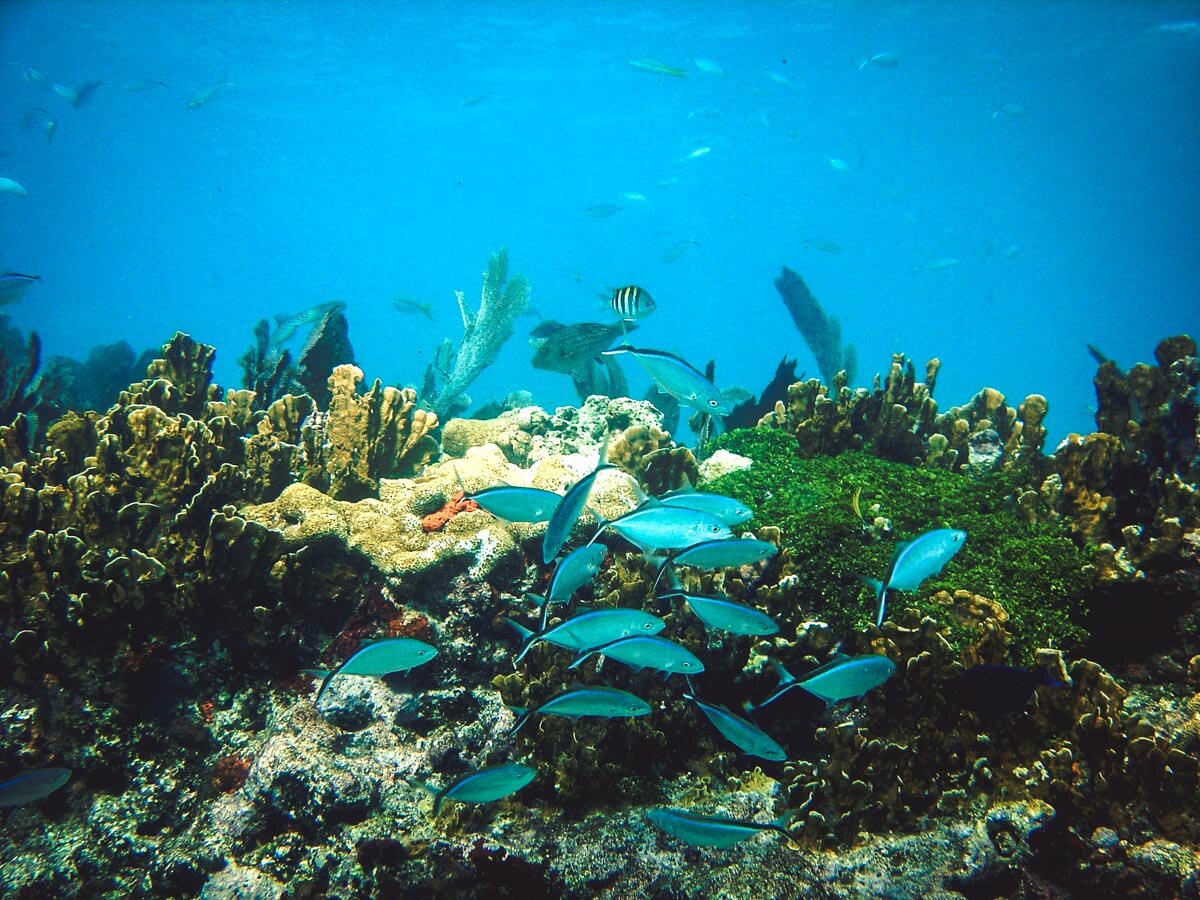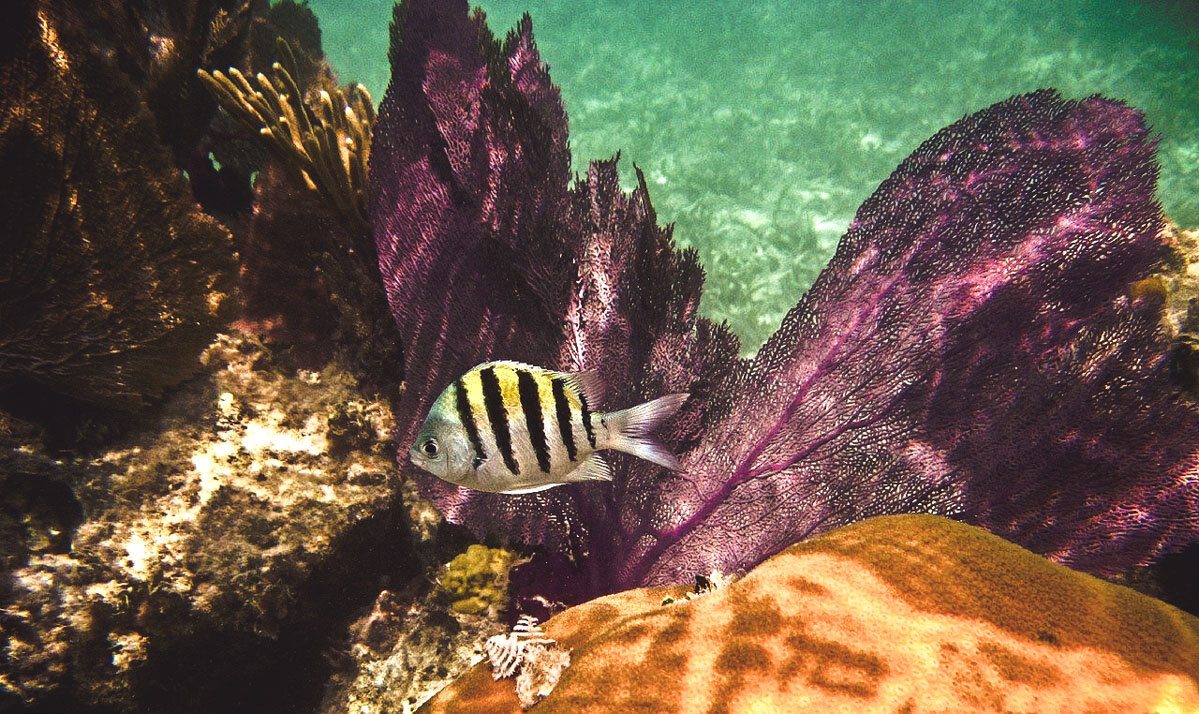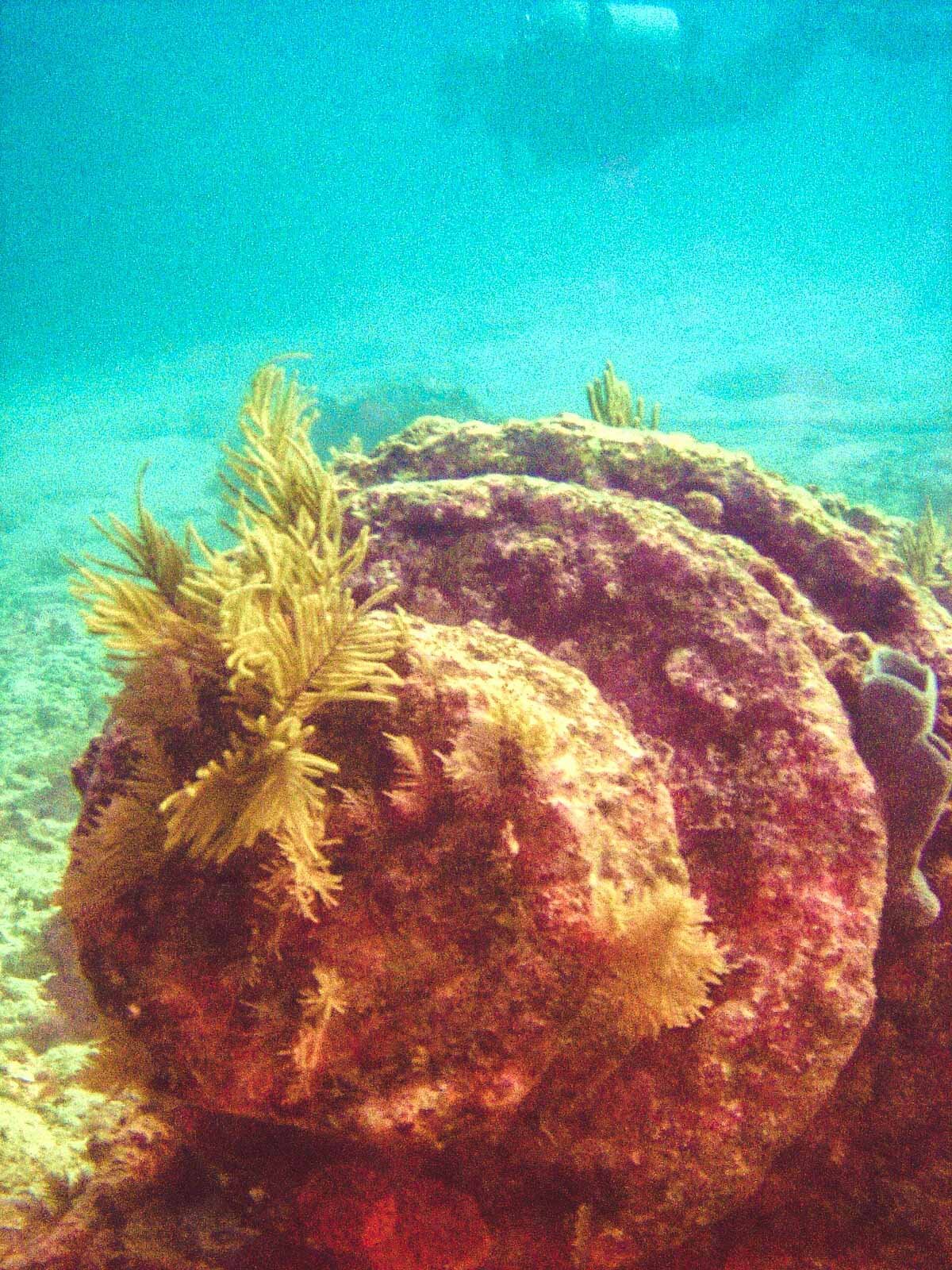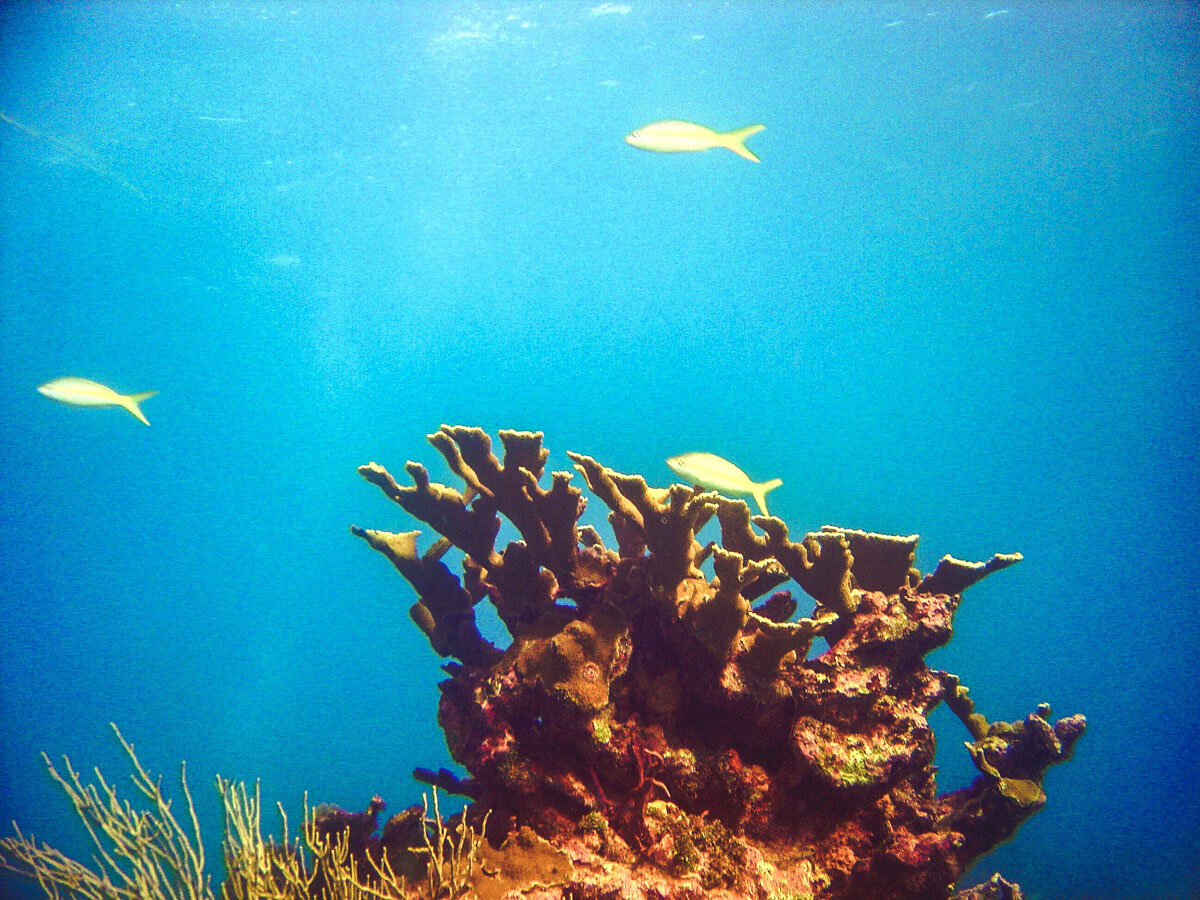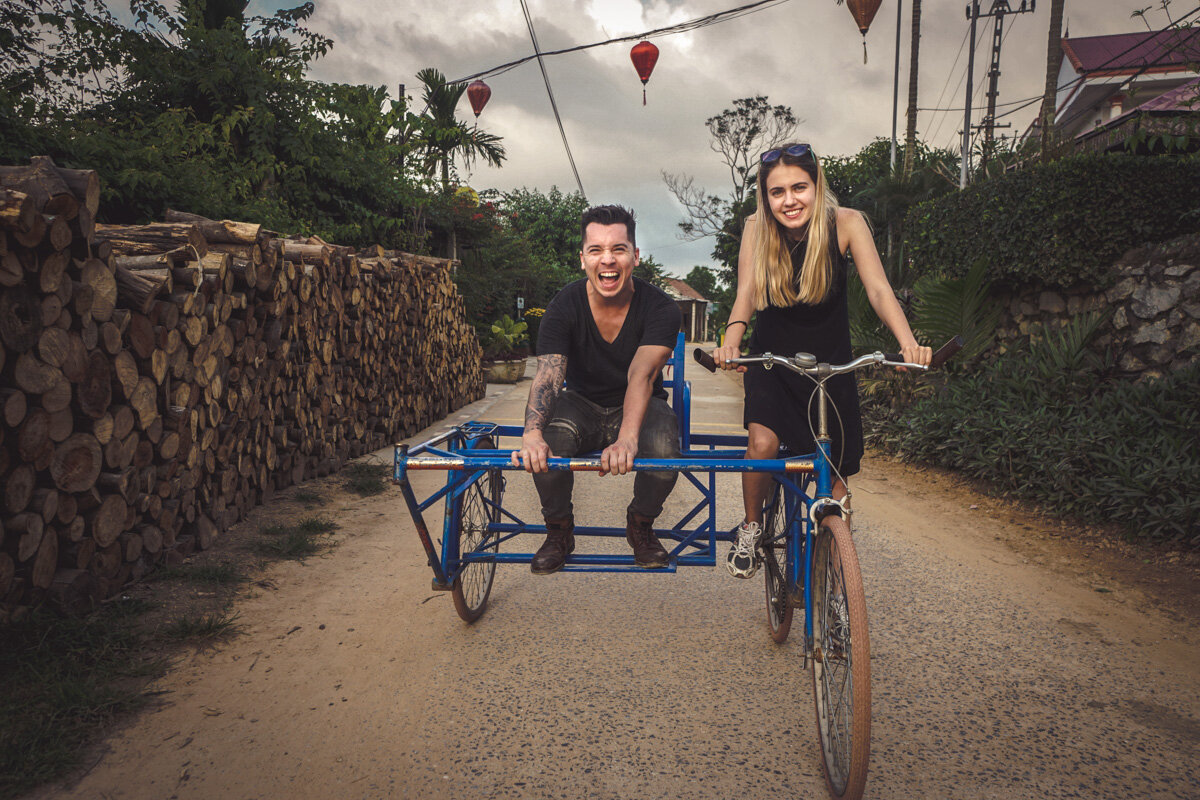Scuba diving in Florida, USA
/Cave Diving in Florida, Photo by Mark Schiller
Florida has been one of the most popular scuba diving destinations for the US and foreign divers due to the great variety in marine life and types of dive sites. The state of Florida also offers unique adventures such as wreck dives, spearfishing, lobstering, treasure hunting, and snorkeling, and even exploring caves and caverns in freshwater springs and lakes. No wonder Florida has attracted water sports enthusiasts for years and with such an interesting variety of diving sites, Florida definitely has a dive spot to fit every diver. Find out what makes this place so beloved with these Florida facts.
Diving in Southeast Florida
The southern state of Florida in the United States has more than a thousand miles of coastline. The lower Atlantic coast (south of West Palm Beach) is one of the best dive spots in Florida thanks to the warm currents of the Gulf Stream passing close to shore. The clear water makes for excellent year-round diving, lobstering, and fishing. Near Palm Beach, all the reefs are within two miles of land and lie in 30-100 feet of water. The Mizpah is a Greek luxury liner that is still completely intact after more than 20 years underwater. This site is filled with beautiful fish. A nice beach dive can be made to a reef of sea fans & coral offshore of Lauderdale-by-the-Sea.
Since the 1980s when more and more divers flocked to the natural reefs of Ft. Lauderdale and Miami, efforts have been made to preserve these reefs. In the waters close to shore numerous artificial reefs have been created by sinking steel ships and structures. The Department of Environmental Resource Management’s artificial reef program has made Miami the place to go for wreck diving. The wrecks and reefs are at various depths making many accessible to novice divers as well as advanced divers.
Just offshore of South Florida and the Florida Keys is where you can find the only natural living coral reef in North America and some of best scuba diving in Florida.
It’s no question that even with all this state has to offer, the jewels of Florida are the Florida Keys. These 31 islands curve gently to the west into the Gulf of Mexico. The Florida Reef, the only living coral garden in North America, lies on the edge of the Gulfstream on the Atlantic side of the Keys.
In Key Largo, you can find John Pennekamp Coral Reef State Park with over 200 miles of underwater paradise protected since 1960. You can dive 16th-century treasure galleon wrecks to hunt for coins and artifacts as well as more recent shipwrecks on charters leaving from Marathon in the Middle Keys. After diving the Florida Keys it is easy to understand why the Keys are the “Dive Capital of the World”.
The Florida Keys
The Florida Keys are a 120-mile long chain of islands that are often called America's Caribbean. This chain of coral islands at the very bottom of Florida's mainland is legendary for its lore of pirates and sunken treasure, but today countless visitors have discovered the real treasure of Florida Keys – world-class diving and snorkeling.
The islands are surrounded by the Atlantic Ocean on one side and the Gulf of Mexico on the other. The Keys offer some of the finest fishing and diving in the world and are the home of the only living Coral Reef in the Continental United States. This makes up for some of the most stunning Scuba diving in Florida, USA.
The locals generally group the islands into five areas.
Key Largo is the first island south of the Florida mainland, and Key West is approximately 100 miles south of Key Largo. In between are the beautiful islands of Islamorada, Long Key, Marathon, Big Pine Key and many more. Key Largo is about a 1-1.5 hour drive from Miami Airport and Key West is roughly another 2 hours drive.
While visiting the keys, you'll quickly note that most locations are defined by a curious "MM" designation. For example, John Pennekamp park is a MM 102. The MM stands for "Mile Marker". Mile markers are the small green signs on the side of the road that represent the mile number along the overseas highway (US 1) and they go lower as you move further south. The beginning of Key Largo is located at mile marker 110. Key West begins at mile marker 8.
Once you visit the Keys, you'll see why some of the most renowned dive photographers and writers in the world make this their home base - you'll discover a completely wonderful world doing some Key West snorkeling. No wonder the Florida Keys has some of the best scuba diving in the world!
Read more about:
Key Largo
Islamorada
Marathon
Key West
Miami
Why stay in Miami Beach?
This city has always been a hotspot for vacationers and Miami’s scuba diving and snorkeling are among the best in the world!
Miami Beach's South Beach, or SoBe, is one of the most popular cities. The beaches are wide and clean; the Atlantic waters shimmer in year-round sunshine, and the Art Deco architecture is waiting to be explored. Miami is a truly international city where you'll find every food imaginable, hear a multitude of languages, and experience dazzling nightlife.
Miami has so many amazing things to do between the dives, so you should seriously consider it as your destination!
Visitors must be sure to explore Lincoln Road Mall, Washington & Collins Avenues, and Ocean Drive, the heart of South Beach. For a slower pace, visitors will enjoy Coconut Grove, Surfside, and Key Biscayne. With dozens of dive boats now operating in the Miami area, it's easy to find accommodations close to a dive boat charter.
Marine conservation and artificial reef
And now, thanks to Department of Environmental Resource Management (DERM) and Ben Mostkoff's vision to develop artificial reefs, Miami is also one of the best dive spots in Florida. Since 1981, artificial reefs have been created by sinking ships, tugs, army tanks, an airplane, radio antennae, and even manmade concrete "reefs". These structures have quickly attracted the growth of corals and a myriad of sea life, making for some dramatic wreck diving and fantastic sites for underwater photography. Numerous artificial reefs are spread offshore along the 45 miles of oceanfront in Miami-Dade County.
Ben Mostkoff began the DERM artificial reef program in 1981. Mostkoff and others recognized that Florida's natural reefs were fragile and in danger of disappearing as more and more humans enjoyed fishing and diving on the reefs. South Florida reefs slow downwind and waves which slow the erosion of the coastline. By sinking durable, environmentally safe materials in specific areas of the ocean bottom, DERM has been able to increase habitats for marine life and prevent erosion while also increasing tourism and allowing a thriving dive industry to develop. This investment has created great scuba diving in Florida and snorkeling in Miami as well.
Finding a suitable dive and Miami Wreck diving
Dozens of dive charters now operate in the Miami area as well as many scuba diving classes. Since the artificial reefs are all close to shore and are placed in groupings, it's easy to find a tour that will allow you to dive more than one wreck or reef. Most of the wrecks are for intermediate and advanced divers, but there are a few artificial structures that can be viewed by novice divers and snorkelers, or those receiving their scuba diving certification.
Islands off Miami Beach
South of Miami Beach begins a long line of islands known as Keys. The shallow waters off of theses keys have numerous patch reefs and coral mounds that are excellent sites for snorkeling. The reefs are in 15 to 40 feet of water. The water is usually quite clear and the dark coral mounds are easily spotted against the white sandy bottom. The two largest Keys in the Miami area are Key Biscayne and Elliott Key. To the south of Elliott begin the Florida Keys which include all the keys from Key Largo to Key West.
Fort Lauderdale
Broward County has three natural reefs that run parallel to the coastline and approximately ninety artificial reefs, including ships and vessels, concrete modules, limestone boulders, and offshore oil platforms.
The first natural reef has nice beaches where you can swim out to spearfish or lobster hunt.
The second reef line has permanent mooring buoys placed in five areas for protection purposes. The mooring areas offer some of the best places to scuba dive in Ft. Lauderdale and features outstanding marine life including gorgonians, sponges, fans, and numerous tropical fish.
The third reef line has very strong currents and offers excellent drift diving for advanced divers.
West Palm Beach
Palm Beach County, has much to offer for diving and snorkeling in Florida. The coastline of Florida presses eastward into the Atlantic Ocean at the Palm Beaches. The mighty Gulf Stream makes its closest pass to Florida here. The strong current brings crystal-clear, warm waters and large marine life to the region.
Spotting sea turtles in Florida
Divers won’t find the same reef environments as in the Florida Keys, but the reefs of West Palm Beach are a mere two miles offshore and covered with colorful sponges and corals. The two reef systems that are running parallel to the coastline are built of ancient coral beds and limestone ledges. The ledges at 60-90 feet are particularly popular with several species of sea turtles.
The Palm Beach region boasts the largest sea turtle population in all of Florida and is also home to the second-largest nesting beach in the world.
Divers who dive regularly on the reefs and wrecks of West Palm Beach routinely spot hawksbill and loggerhead turtles. Green turtles and giant leatherbacks have also been spotted during the spring mating season. As you dive in West Palm Beach, keep in mind that all sea turtles are on the endangered species list. It is against the law to harass a sea turtle, so please stare in awe at these magnificent, ancient animals, but do not touch them.
Hawksbill Turtle swimming underwater in Florida Keys | Flickr Matt Kieffer
Treasure hunting in Florida
While many would say the treasure of Palm Beach is the rich marine life in its waters, there are many divers that have found gold and silver too. During the 1700s ships often wrecked offshore of Florida. At least two of these wrecks were Spanish ships transporting treasure. Salvage companies have contracts with the State of Florida to recover what they can from any treasure ships underwater, but any coins that wash up on beaches are free for the taking. At times, divers hunting lobster on the reef line have uncovered gold plate and the State has allowed them to keep it.
Artificial reef program
For those who love wrecks, Palm Beach County has a well-developed artificial reef program and wreck diving. Several barges and ships have been scuttled to make interesting dive spots. And where else but Palm Beach would you expect to find a 1985 Silver Cloud Rolls Royce resting on the ocean floor? The brand new car was donated and sunk to inaugurate the Artificial Reef Program.
With warm waters, sea turtles, treasure ships, reefs, and wrecks, every diver should be able to find dive spots to enjoy in West Palm Beach!
Boca Raton
Boca Raton's underwater world is teeming with magnificent sea life. Just like when diving in Aqaba, Jordan, the water here is clear like in the Caribbean with tropical fish, reefs, and shipwrecks.
Caribbean-like water clarity
Boca Raton and the Palm Beaches offer divers the opportunity to dive in warm, crystal-clear waters year-round. The Gulfstream makes its closest pass as it cruises past Florida, bringing a large variety of sea life to the vibrant reefs less than two miles offshore. If you visit here, you probably explore the reef lines by drift diving from the southern end northwards.
Diving with sea turtles in Florida
Thanks to the Gulfstream, divers can expect to see huge schools of large fish such as grunts, snapper, jacks, and grouper. This area of southeast Florida is also the best place to spot sea turtles. Check out the Gumbo Limbo Environmental Center in Red Reef Park to see these magnificent animals and learn more about their habitat and lives.
Wreck diving
If wreck diving is your passion, you won't be disappointed diving in Boca Raton. The Palm Beach Artificial Reef Program has scuttled more than 25 wrecks. Many are in less than 75 feet of water and offer great opportunities for divers to explore a wreck for the first time.
Onshore tip:
The Palm Beaches and Boca Raton are well-known vacation destinations. You'll find plenty to do in between dive trips as well. Boca is a luxurious resort city. There are five-star dining establishments, superb golf courses, and upscale shopping areas. If your budget won't allow you to stay in Boca's resorts, check out Delray Beach. The low-key beach town of Delray is just to the north of Boca Raton. There is more nightlife in Delray than Boca.
And another tip:
Even further to the north you'll find the swanky, socialite haven of Palm Beach where the rich and famous have homes. (Think Kennedys, Rockefellers, Trumps.) The regular folks live and vacation in West Palm Beach which is still close enough to allow you to visit Worth Avenue for shopping, dining, and gawking at the glitzy Palm Beach residents.
If are living in Las Vegas, Nevada, you can easily fly into Miami airport and visit one or a few Florida’s dive spots. Why not do this instead of day trips and national parks around Las Vegas you have visited already!
Diving in Central East Florida
The eastern shores of Florida are known as the Atlantic coast. In the past, the waters off Florida from Jacksonville to Vero Beach were considered a non-diving area. The waters were said to be deep and dark with miles and miles of unbroken seafloor.
With the recent advances in Loran-C and GPS technology, anyone willing to brave a 10-mile ride out to sea can experience a breath-taking dive on the wild side. Diving in this region can be unpredictable. The area is filled with large, fast-swimming fish. Divers have spotted cobia, kings, tarpon, and amberjacks.
As a diver descends 90 feet to investigate a small ledge or wreck, he or she can expect to encounter 30-pound fish in huge schools, curious barracudas, and maybe even a 300-pound Goliath grouper!
A short swim of 75-150 yards will take divers and snorkelers to a rock reef that parallels the shore. In less than 15 feet of water, corals, sponges and tropical fish are easily observed. Boat dives can be made on the natural reefs further offshore.
This area is famous for huge spiny lobsters that have been called “bull lobsters”. Take part in the annual lobster hunts for a chance to catch a lobster weighing ten pounds or more!
This can do for a great weekend trip to escape hustle and bustle of New York City!
Diving in Northeast Florida
Jacksonville
Jacksonville is a giant metropolitan area at the northern edge of Florida’s east coast. The Jacksonville area has much to offer for all types of vacations. Explore car rental Miami options and get acquainted with this great area! To the north are Fernandina Beach and Amelia Island, two quaint southern towns. To the east of the city proper is what residents call “The Beaches”: Mayport, Atlantic Beach, Jacksonville Beach, Neptune Beach, Ponte Vedra Beach, and, farther south, South Ponte Vedra Beach, North Beach and Vilano Beach. The city itself offers lively nightlife and lots to do. It’s not quite a college town, but with a median age of 33 years, Jacksonville has plenty of activities to be enjoyed by people of all ages.
Jacksonville used to be unpopular
Until very recently, Jacksonville was ignored by sport divers who felt the waters were too deep and dark to offer anything interesting to explore. The only divers were spearfishermen who reported diving in waters so thick with fish they called it “the sea of fish”. Once GPS became popular, dive charter boats began to explore the waters and discovered pristine reefs and ledges harboring thousands of fish. An active artificial reef program has placed many interesting wrecks on the bottom too.
Best “wild dive” experience
Because it has been nearly untouched for so many years, some divers consider Jacksonville the best area for sport divers seeking a “wild dive” experience.
Most of the reefs, ledges and wrecks are 10 or more miles offshore, so expect an hour boat ride to some spots. Depths generally range from 60-100 feet with visibility sometimes as good as 100 feet. Summer is the best time to find warm, calm waters, but visibility can get low in August.
Divers in Jacksonville say the best part of diving in Jax is the huge amounts of marine life that can be observed on every dive. Silver masses of up to 40-pound cobia, kings, tarpon, amberjacks and barracuda swim by you as you descend. Wrecks are covered in clouds of baitfish and tiny tropicals hide inside colorful corals and sponges. Goliath Grouper up to 300 pounds have been spotted.
Onshore tip:
If you need a day or two on dry land, explore A1A (the Beach Highway) that runs from Amelia Island in the north to Historic St. Augustine in the south. There are plenty of shopping and attractions along the way. The Mayport Naval Station, one of the largest naval stations on the East coast, offers tours of the base and sometimes the ships in port.
Diving in Southwest Florida
Naples
Charming Naples is a popular beach destination in the Gulf of Mexico. It boasts good diving almost all year round, though choppy waters from stiff winds during the winter months can limit visibility. Diving here is a little more challenging than in other Florida locations. Rides to the dive sites can be quite long and sometimes bumpy. The waters off the Gulf Coast are generally warm and inviting, but lack the clarity of the Atlantic which is cleansed by the Gulf Stream.
But dive Naples and you will experience sites that will remain with you for a lifetime! Many of the reefs and wrecks of this area are still virtually virgin diving. Fish are abundant and very large. There are literally, colonies of Jewfish, meandering nurse sharks, and huge turtles cruising the area.
Diving in Central West Florida
Tampa / St. Petersburg
The Tampa area is world-famous for spear-fishing. An abundance of large game fish such as cobia, snapper, kingfish, bonito, mackerel and grouper, can be found in the Gulf waters. For those who don’t spear, there are oysters, scallops, stone crab and slipper lobster.
Tampa has the best artificial reef systems in Florida which were first founded in the 1960s to improve the marine ecosystem. The reefs consist of bridge rubble, concrete culverts, specially constructed fish havens, shipwrecks and even army tanks.
The natural formations offshore of Tampa are limestone ledges that vary in height from 2-12 feet and are found at depths of 35-60 feet. In fact, they are the ancient shoreline of Florida.
If you are looking for a nice place to stay, check out Anna Maria Island Rentals.
Diving in North Central Florida
The north-central region of Florida is filled with natural springs, sinkholes, rivers and lakes. Within 20 miles of the town of Branford are 30 diveable springs and sinkholes, several of which must surely be among the best in the world.
Most have large openings allowing easy entry and plenty of room to explore within the natural light. If you wish to safely proceed into the intertwining passages beyond the natural light, you should receive specialized cave training that is available through dive operators at the springs.
Diving in Northwest Florida
The northern section of the state is known as the Panhandle. From Pensacola, the land curves around the Gulf of Mexico. This western coastline is called the Gulf Coast and the waters there are generally calm. The beaches are wide with white sand and miles of dunes in the north. Many small vacation communities dot the beaches.
You can explore some cool wreck dives just offshore of Pensacola while there are no shore-entry dives in this region. Offshore of Destin are fabulous rock reefs. These tall limestone walls are the remains of prehistoric shorelines. The numerous crevices are filled with marine life. Off Mexico Beach is the wreck of the Empire Mica, a British tanker sunk in 1942 by a U-boat.
Wondering where is the best place to see manatees in florida?
A bit further south is Crystal River which is a popular winter home for manatees and it is possible to dive with them. There is no coral reef in this region but there are two spots for beach diving.
Bradenton Beach is the location of Regina (or Sugar Barge), a tanker that sunk in 1940 and was declared an Underwater Archaeological Preserve in 2004. At Venice, Public Beach divers have found prehistoric shark teeth as large as six inches while diving off the beach.
Pensacola
Pensacola is often known as the Western Gate to the Sunshine State. Located on the Western edge of Florida's Panhandle, the city is closer to Alabama than to the state capital of Tallahassee. Pensacola has long been a popular vacation spot. The city is home to the US. Military's Aviation Training facilities. All Navy, Air Force, and Coast Guard pilots begin their training at the air station that evolved from the Navy shipyard built in 1825. The station is also home to the Navy's Blue Angels who train weekly from March to November.
One of the world's longest barrier islands
Pensacola's over 50 miles of protected shoreline boasts clear waters and sugary white sand. One of the world's longest barrier islands, Santa Rosa Island, is home to Pensacola Beach. Perdido Key lies just over ten miles to the West of Pensacola. Perdido has several beautiful, protected recreation areas. The world's longest fishing pier, the Pensacola Bay bridge, allows you to fish right out in the middle of the bay.
If you want to dive in Florida, Pensacola is the closest place to reach from San Antonio, Texas!
You might be allowed to sink an artificial reef!
Diving offshore in the Pensacola area has improved greatly since the introduction of the Escambia County Artificial Reef Program in the 1970s. Florida and Alabama are currently the only states that allow private citizens to sink artificial reefs in designated areas. Seven of these permitted areas are offshore of Escambia. This aggressive artificial reef program has fostered a great expansion in marine life in the waters offshore of the Florida Panhandle.
The largest artificial reef in the world!
Divers in Pensacola have been eagerly awaiting the reefing of the USS Oriskany, an 888-foot aircraft carrier that is awaiting a permit from the Environmental Protection Agency before being deployed as a reef. The Oriskany was built in 1945 and served in both the Korean and Vietnam wars. She is the carrier from which Sen. John McCain took off before being shot down and taken prisoner in North Vietnam in 1967.
The USS Oriskany has been sunk in approximately 212 feet of water about 22 miles offshore of Pensacola. It is currently the largest vessel intentionally sunk as a reef and the largest artificial reef in the world!
Destin
Over the years, the little seaside town of Destin in Florida's panhandle has become a playground for tourists. Miles and miles of white sandy beaches were the first attraction. The entire beach area now has a variety of entertainments to offer tourists.
Scuba divers and snorkelers enjoy the calm, clear, warm waters that have natural limestone ridges that attract marine life. The limestone ledges are part of the DeSoto Canyon which brings deep waters closer to shore than any other point on the Gulf of Mexico. The ledges are covered with finger and basket sponges, aqua and purple sea whips, and a variety of colorful corals. The deep waters attract dolphins, six-foot manta rays, huge loggerhead sea turtles, migrating mackerel, amberjack, and cigar minnows.
In addition to the exciting natural underwater terrain, there are shipwrecks and artificial reefs to explore. Courtesy of the Air Force training that has taken place over Destin and the Gulf for years, there are also airplanes and missile parts scattered on the sandy bottom.
Panama City
Panama City lies on St. Andrew Bay about half-way from Tallahassee to Pensacola. PC (as the locals call it) is more of a party town than nearby Destin and Port St. Joe. During Spring Break, the town is filled with college kids enjoying the beaches and nightlife. Panama City's white sandy beaches have been called the "World's Most Beautiful Beaches" and the waters of the Gulf of Mexico provide plenty of exciting spots for fishing and diving.
A little bit of history
Along with the natural reefs offshore there are several interesting historic shipwrecks, including the Empire Mica, a 465-foot British tanker sunk by a U-Boat during World War II; and the Tarpon, a twin-screw steamer that sank during a storm in 1929 and is now Florida's Sixth Underwater Archaeological Preserve. An aggressive artificial reef program began in the 1970s. Since then, U.S. Naval ships and parts, bridge spans, tugs, barges, and airplanes have been sunk to form new marine habitats.
How to avoid the crowds
If you are seeking a quiet vacation, visit in the Fall when few college kids are in town. In addition to the great diving, PC also has world-class golf resorts and fine restaurants. And don't forget to stop in the tiny Museum of Man in the Sea to check out the exhibits on the history of diving.




